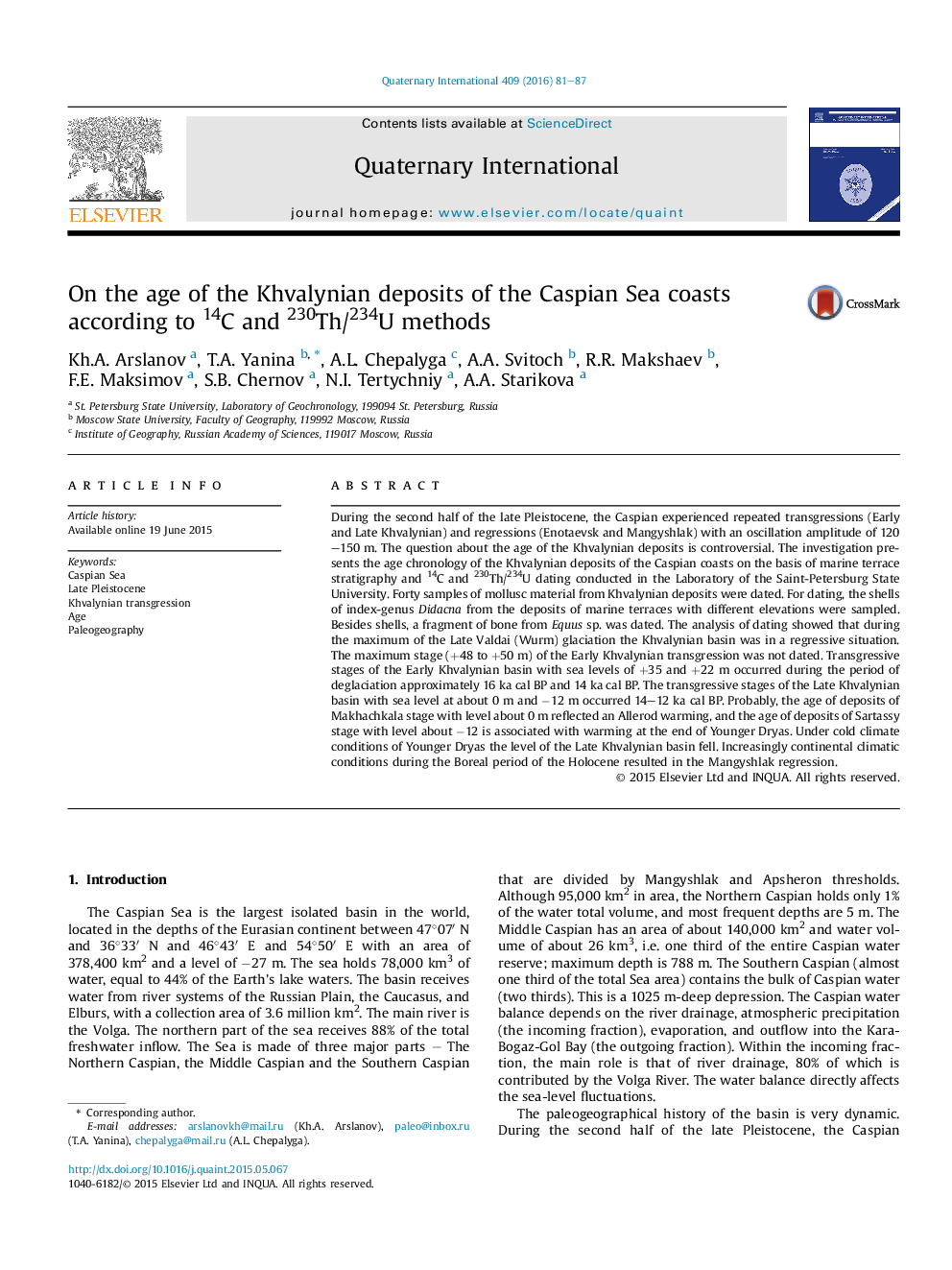| کد مقاله | کد نشریه | سال انتشار | مقاله انگلیسی | نسخه تمام متن |
|---|---|---|---|---|
| 1039990 | 944446 | 2016 | 7 صفحه PDF | دانلود رایگان |
During the second half of the late Pleistocene, the Caspian experienced repeated transgressions (Early and Late Khvalynian) and regressions (Enotaevsk and Mangyshlak) with an oscillation amplitude of 120–150 m. The question about the age of the Khvalynian deposits is controversial. The investigation presents the age chronology of the Khvalynian deposits of the Caspian coasts on the basis of marine terrace stratigraphy and 14C and 230Th/234U dating conducted in the Laboratory of the Saint-Petersburg State University. Forty samples of mollusc material from Khvalynian deposits were dated. For dating, the shells of index-genus Didacna from the deposits of marine terraces with different elevations were sampled. Besides shells, a fragment of bone from Equus sp. was dated. The analysis of dating showed that during the maximum of the Late Valdai (Wurm) glaciation the Khvalynian basin was in a regressive situation. The maximum stage (+48 to +50 m) of the Early Khvalynian transgression was not dated. Transgressive stages of the Early Khvalynian basin with sea levels of +35 and +22 m occurred during the period of deglaciation approximately 16 ka cal BP and 14 ka cal BP. The transgressive stages of the Late Khvalynian basin with sea level at about 0 m and −12 m occurred 14–12 ka cal BP. Probably, the age of deposits of Makhachkala stage with level about 0 m reflected an Allerod warming, and the age of deposits of Sartassy stage with level about −12 is associated with warming at the end of Younger Dryas. Under cold climate conditions of Younger Dryas the level of the Late Khvalynian basin fell. Increasingly continental climatic conditions during the Boreal period of the Holocene resulted in the Mangyshlak regression.
Journal: Quaternary International - Volume 409, Part A, 21 July 2016, Pages 81–87
